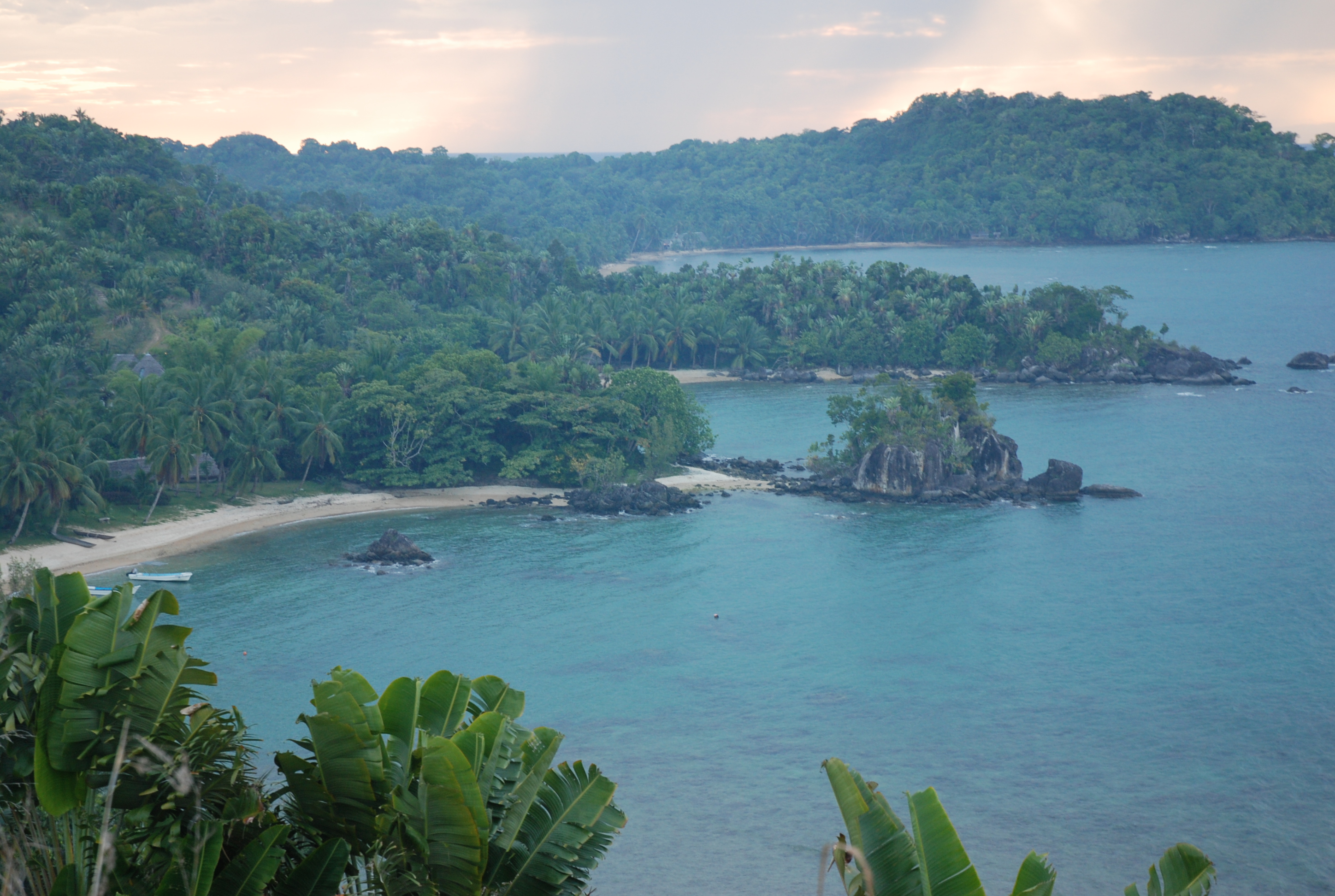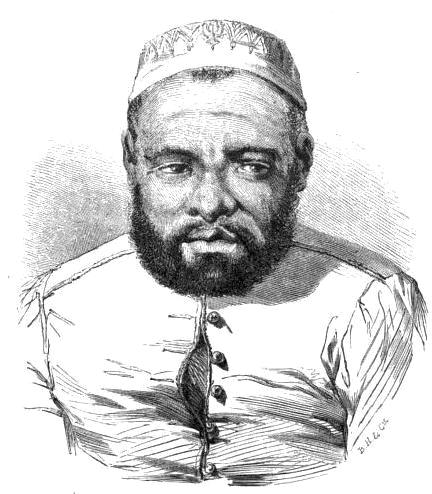|
Bety Of Betsimisaraka
Marie Elisabeth "Bety" Sobobie of Betsimisaraka or ''Betia'' (1735–1805), was queen regnant of the kingdom of Betsimisaraka, consisting of the island Île Sainte-Marie and parts of eastern Madagascar, from 1750 to 1754 (Île Sainte-Marie) and 1762 (Eastern Madagascar). She famously ceded the Île Sainte-Marie to France in 1750. Life Bety was the daughter of king Ratsimilaho of Betsimisaraka (also known as Tom Smilo) and the sakalava princess Mamadion of Boina. She was the paternal granddaughter of a British or American pirate by the name Thomas (Thomas Tew, Thomas White or Thomas Collins), and queen Antavaratra Rahena of Zana Malata. The Île Sainte Marie was at this time inhabited by the Zana Malata, which was a mixture of the local inhabitants and the Western pirates who had used the island as a base since the 1680s. The father of Bety united the island to one kingdom and also conquered a part of the Eastern coast of Malagasy, and gave the kingdom the name Betsimisaraka. Bety ... [...More Info...] [...Related Items...] OR: [Wikipedia] [Google] [Baidu] |
Betsimisaraka Region
The Betsimisaraka ("the many inseparables") are the second largest ethnic group in Madagascar after the Merina and make up approximately fifteen percent of the Malagasy people. They occupy a large stretch of the eastern coastal region of Madagascar, from Mananjary in the south to Antalaha in the north. The Betsimisaraka have a long history of extensive interaction with European seafarers and traders that produced a significant subset with mixed European-Malagasy origins, termed the ''zana-malata''. European influence is evident in the local ''valse'' (waltz) and ''basesa'' musical genres, which are typically performed on the accordion. ''Tromba'' (spirit possession) ceremonies feature strongly in Betsimisaraka culture. Through the late 17th century, the various clans of the eastern coastal region were governed by chieftains who typically ruled over one or two villages. A ''zana-malata'' named Ratsimilaho emerged to unite these clans under his rule in 1710. His reign lasted 50 yea ... [...More Info...] [...Related Items...] OR: [Wikipedia] [Google] [Baidu] |
Île Sainte-Marie
Nosy Boraha , previously known as Sainte-Marie, main town Ambodifotatra, is an island off the east coast of Madagascar. The island forms an administrative district within Analanjirofo Region, and covers an area of 222 km2. It has a population estimated at 30,000. Sainte-Marie Island is known for its authentic and preserved character, its whale watching, its beautiful beaches, its romantic history and the kindness of its inhabitants. Administration The island is organized as the city (''commune urbaine'') and district of Nosy Boraha in Analanjirofo Region. *1 town hall *17 fokontany (villages) *1 deputy Population The Betsimisaraka are the largest ethnic group on the island, though there had been a long history of mixed marriages, including with pirates in the 17th century. Transport infrastructure *1 international airport in the South (inaugurated 2015) *1 commercial port (Ilot Madame) *1 passenger port (Ambodifotatra) Ferries leave from Soanierana Ivongo and Mahambo, ... [...More Info...] [...Related Items...] OR: [Wikipedia] [Google] [Baidu] |
Madagascar
Madagascar (; mg, Madagasikara, ), officially the Republic of Madagascar ( mg, Repoblikan'i Madagasikara, links=no, ; french: République de Madagascar), is an island country in the Indian Ocean, approximately off the coast of East Africa across the Mozambique Channel. At Madagascar is the world's List of island countries, second-largest island country, after Indonesia. The nation is home to around 30 million inhabitants and consists of the island of Geography of Madagascar, Madagascar (the List of islands by area, fourth-largest island in the world), along with numerous smaller peripheral islands. Following the prehistoric breakup of the supercontinent Gondwana, Madagascar split from the Indian subcontinent around 90 million years ago, allowing native plants and animals to evolve in relative isolation. Consequently, Madagascar is a biodiversity hotspot; over 90% of wildlife of Madagascar, its wildlife is endemic. Human settlement of Madagascar occurred during or befo ... [...More Info...] [...Related Items...] OR: [Wikipedia] [Google] [Baidu] |
Ratsimilaho
Ratsimilaho (c.1694 – 1750) was a ruler of an east coastal region of Madagascar. He is said to be the son of an English pirate Thomas Tew and a Malagasy queen regnant, Antavaratra Rahena. The region, known as the Betsimisaraka confederation, covered of coast and this legacy was created by Ratsimilaho.Ratsimilaho ''Encyclopædia Britannica'', accessed 13 August 2008 The Betsimisaraka make up approximately fifteen percent of the Malagasy people and are the second largest group in after the |
Sakalava
The Sakalava are an ethnic groups of Madagascar, ethnic group of Madagascar. They are found on the western and northwest region of the island, in a band along the coast. The Sakalava are one of the smaller ethnic groups, constituting about 6.2 percent of the total population, that is over 1,210,000 in 2014. Their name means "people of the long valleys." They occupy the western edge of the island from Toliara in the south to the Sambirano River in the north. Ethnic identity The Sakalava denominate a number of smaller ethnic groups that once comprised an empire, rather than an ethnic group in its own right. The origin of the word ''Sakalava'' itself is still subject to controversy, as well as its actual meaning. The most common explanation is the modern Malagasy language, Malagasy translation of Sakalava meaning long ravines, denoting the relatively flat nature of the land in western Madagascar. Another theory is that the word is possibly from the Arabic ''saqaliba'', which is in t ... [...More Info...] [...Related Items...] OR: [Wikipedia] [Google] [Baidu] |
Zana Malata
Zana may refer to: Mythological figures * Zână, a female mythological figure in Romanian mythology * Zana (mythology), an Albanian mythological figure Places * Diana Veteranorum or Zana, an ancient Roman city in Algeria * Zana, Burkina Faso, a village in Bam Province * Zana, Ethiopia, a village near Shiraro in the Tigray Region * Zana, Florida, a ghost town in Florida, U.S. * Zana, Uganda, a neighborhood in Ssabagabo Municipality, Wakiso District * Zana Khan District, Ghazni Province, Afghanistan * Zaņa Parish, Latvia * Zaña, a town in northern Peru * Zaña River. a river in Northern Peru * Zaña Valley, an archaeological area in northern Peru People The name Zana (), also means handsome in the Yazdi dialect. * Leyla Zana (born 1961), Turkish Kurdish politician * Zana Allée (born 1994), Kurdish-born French footballer * Zana Briski (born 1966), photographer and filmmaker * Zana Clarke (born 1965), Australian composer * Zana Fraillon (born 1981), Australian writer for ... [...More Info...] [...Related Items...] OR: [Wikipedia] [Google] [Baidu] |
French East India Company
The French East India Company (french: Compagnie française pour le commerce des Indes orientales) was a colonial commercial enterprise, founded on 1 September 1664 to compete with the English (later British) and Dutch trading companies in the East Indies. Planned by Jean-Baptiste Colbert, it was chartered by King Louis XIV for the purpose of trading in the Eastern Hemisphere. It resulted from the fusion of three earlier companies, the 1660 Compagnie de Chine, the Compagnie d'Orient and Compagnie de Madagascar. The first Director General for the Company was François de la Faye, who was adjoined by two Directors belonging to the two most successful trading organizations at that time: François Caron, who had spent 30 years working for the Dutch East India Company, including more than 20 years in Japan, and Marcara Avanchintz, an Armenian trader from Isfahan, Persia. History In 1604, French king Henry IV authorized the first ''Compagnie des Indes Orientales'', granting the fi ... [...More Info...] [...Related Items...] OR: [Wikipedia] [Google] [Baidu] |
Isle De France (Mauritius)
Isle de France () was the name of the Indian Ocean island which is known as Mauritius and its dependent territories between 1715 and 1810, when the area was under the French East India Company and a part of the French colonial empire. Under the French, the island witnessed major changes. The increasing importance of agriculture led to the importation of slaves and the undertaking of vast infrastructural works that transformed Port Louis into a major capital, port, warehousing, and commercial centre. During the Napoleonic Wars, Isle de France became a base from which the French navy, including squadrons under Rear Admiral Linois or Commodore Jacques Hamelin, and corsairs such as Robert Surcouf, organised raids on British merchant ships. The raids (see Battle of Pulo Aura and Mauritius campaign of 1809–1811) continued until 1810 when the British sent a strong expedition to capture the island. The first British attempt, in August 1810, to attack Grand Port resulted in a Frenc ... [...More Info...] [...Related Items...] OR: [Wikipedia] [Google] [Baidu] |
Foulpointe
Mahavelona (commonly called Foulpointe), is a town in the district of Toamasina II, in the region of Atsinanana, on the northern part of the east coast of Madagascar. Geography It is situated at the coast of the Indian Ocean south of the mouth of the Onibe River. The town is located at 60 km north of Toamasina on the RN 5 between Toamasina and Maroantsetra Maroantsetra , formerly Louisbourg, is a market town and domestic seaport in Analanjirofo Region, Madagascar, at the northern end of the Bay of Antongil. In 2005 it had a population of 42,529 people. History Maurice Benyovszky arrived in Maroant .... There is a reef around 150 metres out to sea which prevents waves hitting the beach; the waters by the shoreline are completely calm as a result. Economy Its economy is based on tourism. Image:Plage FullPoint.JPG, View of beach Image:Bungallow Manda beach.jpg, Bungalow at Manda beach Image:Plage De Foulpointe.jpg, Beach of Foulpointe Image:Manda Fort Prison Foulpointe ... [...More Info...] [...Related Items...] OR: [Wikipedia] [Google] [Baidu] |
Jean Hare
Jean may refer to: People * Jean (female given name) * Jean (male given name) * Jean (surname) Fictional characters * Jean Grey, a Marvel Comics character * Jean Valjean, fictional character in novel ''Les Misérables'' and its adaptations * Jean Pierre Polnareff, a fictional character from ''JoJo's Bizarre Adventure'' Places * Jean, Nevada, USA; a town * Jean, Oregon, USA Entertainment * Jean (dog), a female collie in silent films * "Jean" (song) (1969), by Rod McKuen, also recorded by Oliver * ''Jean Seberg'' (musical), a 1983 musical by Marvin Hamlisch Other uses * JEAN (programming language) * USS ''Jean'' (ID-1308), American cargo ship c. 1918 * Sternwheeler Jean, a 1938 paddleboat of the Willamette River See also *Jehan * * Gene (other) * Jeanne (other) * Jehanne (other) * Jeans (other) * John (other) John is a common English name and surname: * John (given name) * John (surname) John may also refer to: New Testa ... [...More Info...] [...Related Items...] OR: [Wikipedia] [Google] [Baidu] |
De Facto
''De facto'' ( ; , "in fact") describes practices that exist in reality, whether or not they are officially recognized by laws or other formal norms. It is commonly used to refer to what happens in practice, in contrast with ''de jure'' ("by law"), which refers to things that happen according to official law, regardless of whether the practice exists in reality. History In jurisprudence, it mainly means "practiced, but not necessarily defined by law" or "practiced or is valid, but not officially established". Basically, this expression is opposed to the concept of "de jure" (which means "as defined by law") when it comes to law, management or technology (such as standards) in the case of creation, development or application of "without" or "against" instructions, but in accordance with "with practice". When legal situations are discussed, "de jure" means "expressed by law", while "de facto" means action or what is practiced. Similar expressions: "essentially", "unofficial", "in ... [...More Info...] [...Related Items...] OR: [Wikipedia] [Google] [Baidu] |



